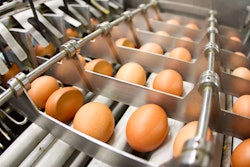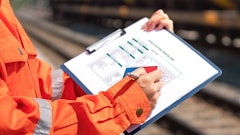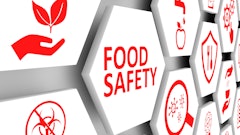
We can all agree that consumers should never have to worry whether their food is safe. Where agreement doesn’t exist, however, is in the how. How do we best monitor for chemical, biological and physical contaminants, how do we report and to whom, and how much regulation is too much?
Even as industry continues to debate the how, prevailing sentiment is that the onus for ingredient and finished product safety is on manufacturers large and small, not on the myriad regulatory bodies that now have jurisdictional oversight. After all, no regulator has sufficient resources to do anything more than perfunctory testing, and many agencies would readily admit they are drowning in data that, despite the intrinsic value, they are unable to effectively access and use.
The answer must – and is – coming from those best positioned to be stewards of food safety: the producers and manufacturers themselves. But this isn’t a case of the “fox guarding the hen house,” because there is no predator here. Each producer or manufacturer is accountable up and down an increasingly more transparent food supply chain. The consequences of a mistake range from crippling stock deflation for a mega brand to the complete shuttering of a smaller company affected by a recall on a national or international stage.
Now the burden of proof has shifted to industry, and each link in the supply chain has a proportional responsibility to supply safe product. Suddenly it doesn’t matter whether the Food Safety Modernization Act (FSMA) goes too far or whether the General Food Law Regulation in the European Union goes even farther. If the industry has a vested interest in delivering safe food – because the alternative is business ending – they’ll make investments that exceed what’s required by regulation.
What Is Harmonization?
Many eyes are on the Trans-Pacific Partnership (TPP), and the food industry is no exception. A high-standard TPP agreement that addresses tariff and non-tariff barriers, including phytosanitary measures, will support expansion of U.S. agricultural exports and promote job growth.
Critics of the law believe that an already loose net will get looser. For years, domestic seafood producers have complained of contaminated imports, including shrimp from TPP-participant Vietnam. How, these critics wonder, will opening trade help this long-standing problem? And this is just one example among many. Simply put, there is no regulatory harmony between these 11 potential trade partners – and the many other nations not part of TPP – so it’s right to wonder how standards will be monitored and met.
The same worries exist as the United States and European Union hammer out terms of the TTIP, “an ambitious, comprehensive, and high-standard trade and investment agreement.” Protests in the streets of Europe earlier this year don’t portend well for TTIP, but that doesn’t change the fact that strong political will exists to remove real and perceived shackles that prevent a free-flowing global food supply chain. Before this happens, however, proponents will need to win over those who question whether harmonization does indeed benefit consumers.
Without taking sides, however, we can at least concede that cross-jurisdictional harmonization will require negotiation and trade-off. What if, instead, harmonization capitalized on industry’s willingness to accept the burden of proof and make harmonization about following data-driven business rules instead of adherence to a hodgepodge of standards? In this case, could the outcome – safer food – actually be better? Perhaps.
Achieving Data Harmony First
While there’s no single formula establishing rigor across the global food supply chain, one way is to rely on ISO 22000 within labs, whether those are onsite or contract. LIMS and ISO 22000 together can form a circulatory system for managing a highly distributed food supply chain, with data as the lifeblood. What we’d have then is data harmonization first.
Once you harmonize the data, you’re one step closer to protecting your flanks up and down your supply chain. Or, if you’re a single link in that chain, you have a way to validate that your ISO 22000-driven processes and management systems enable you to immediately plug into a lucrative global supply chain.
Over the next decades, the world will get progressively “flatter,” and that brings both opportunity and risk. But whether harmonization is possible across disparate jurisdictions is moot – what’s most exciting for our industry is seeing how it steps up, arming itself with data and technology such as LIMS to make it our mission to ensure that consumers never have to worry whether their food is safe.

















